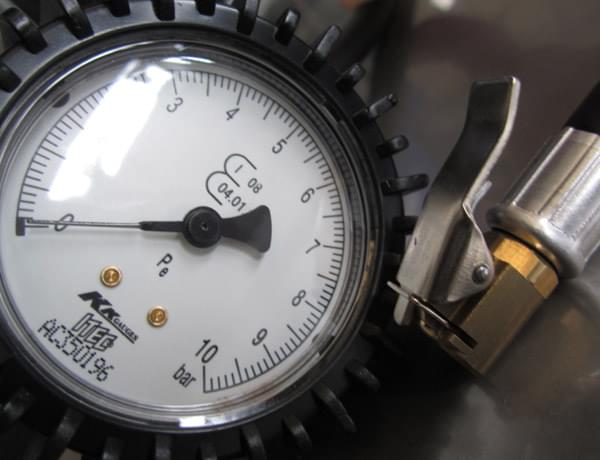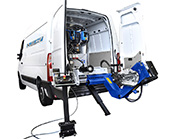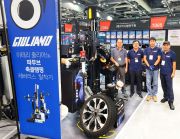
Tyres: the right pressure to save and be safe
Tyres are the only point of contact between vehicle and road; therefore, they play a key role in vehicle safety. Incorrect tyre pressure can compromise cornering, braking and stability, preventing tyre from performing its function properly.
A recent survey found that 40% of drivers check their tyre pressure levels less than once a year. Principal causes? Laziness, carelessness and false sense of savings.
Driving with incorrect tyre pressure can affect vehicle’s handling, and can seriously compromise safety. See below how tyre pressure can affect safety:
- Greater tread wear. A tyre which is 20% under- inflated can give 20% less mileage;
- Increased braking distance;
- Higher fuel consumption. Low tyre pressure increases both fuel consumption and CO2 emissions. Tyres under inflated by 1 bar lead to 6% higher fuel consumption;
- Greater risk of aquaplaning.
How to determine correct tyre pressure for your vehicle?
The correct pressure for your vehicle can normally be found in your owner's manual, and typically ranges between 2 and 3 bars. It's good to remember that winter tyres require different pressure than summer ones.
How to check your car tyre pressure?
To test your tyre pressure, you need an accurate pressure gauge. Check pressure when tyres are cold. As you drive your car, friction causes tyres to heat up, increasing pressure inside the tyre.
Vehicles equipped with TPMS, an electronic system designed to monitor air pressure inside the tyres, alert drivers when at least one tyre deflates below the recommended pressure level. Pay attention, however, to vehicles equipped with indirect TPMS that works with Antilock Braking System (ABS), as in this case tyre pressure is not actually measured but only deduced, so it may potentially be incorrect.
How often should I check my vehicle's tyre pressure?
Check your tyre pressure at least once a month and before/after any long journeys.
How do I know if the tyre is not inflated properly?
Contact surface size grows as tyre pressure decreases; this causes high fuel consumption and tyre wear on the outside edges of the tread. Overinflating reduces the contact surface area, causing the tyre to wear down in the middle of the tread.
Uneven and irregular tread wear are also signs of incorrect inflation pressure.
What causes tyre pressure loss?
Tyres are typically inflated with air that's a combination of miscellaneous gases. And since all gases expand when heated and reduce when cooled, tyre inflation pressure rises and falls with changes in temperature by about one psi (pound per square inch) for every 10° Fahrenheit change in temperature.
A tyre loses some of its pressure through natural causes, typically up to 0.06 bars per month. Pressure loss may be accelerated also by other air leaks due to an accidental puncture, damaged valve or wheel. We can therefore conclude that maintaining correct tyre pressure is important to ensure both safety and fuel economy. And for this reason, Giuliano Industrial decided to equip (standard or optional depending on model) all its tyre changers with tyre inflation systems.
Entrust tyre professionals using Giuliano products, designed for your tyres safety, as well as your own one.




